Hip Flexor Tendinopathy
Hip flexor tendinopathy, another name for hip flexor tendonitis, is a painful disorder affecting the tendons in the front of the hip. Runners, cyclists, and dancers are among the athletes who frequently experience it due to their repetitive hip flexion movements.
Usually starting slowly in the morning, tendinitis pain manifests as some degree of stiffness. It usually improves with a good warm-up and returns following physical activity.
Hip flexor tendinopathy: what is it?
Your thigh’s front muscles, known as the hip flexors, assist in raising your knee and leg. They are also referred to as the iliopsoas muscles. Strong tendon attachments connect muscles to bones. Any injury or illness that damages a tendon over time is called tendinopathy.
Tendonitis pain typically begins slowly in the morning and manifests as some degree of stiffness. It usually gets better after a vigorous warm-up and returns after working out.
Overload, especially in runners trying to perform some speed training or in track and field athletes practicing at high speeds, is one of the reasons a Hip Flexor tendon might become sore.
Introduction:
Hip flexor tendinopathy is a serious medical illness that results in inflammation and tiny tears in the tendons, which hurt and create discomfort in the hip region. A tendon is a thick band that joins muscles to bones and is composed of tiny fibers. Overuse, trauma, or tendon degeneration are common causes of this illness. You may feel pain, stiffness, and decreased hip mobility if you have hip flexor tendinopathy, especially when bending, lifting, or twisting. Some people’s quality of life is significantly impacted by this disease.
Overstressing the tendon repeatedly and excessively might lead to tendinopathy. For similar reasons, such as frequent long-distance running or cycling, a tendinopathy can also develop in the hip flexors.
On the other hand, the likelihood of this could be influenced by hip flexor tightness, which can arise from maintaining an elongated hip flexion posture. An excellent example of this would be someone who, like many of us, works at a desk and then engages in regular running. The hip flexors can experience significant strain from running-related hip extension, which puts a lot of strain on the tendon. Tendinopathy may eventually arise from this.
It is an inflamed and swollen tendon that causes acute hip tendonitis. On the other hand, a persistently injured tendon resulting in enlarged, discolored, and degenerated tendons with tangled fibers causes tendinosis, a chronic illness.
What are the hip flexors?
The hip flexor muscles include the psoas muscle. The groin, hips, and lower back are connected to the top of the femur, which is the biggest bone in the body, by the hip flexor muscles.
A person can move because of the simultaneous contraction of several hip flexor muscles. These muscles consist of;
- Important muscles in the iliopsoas group are the iliacus and psoas.
- portion of the quadriceps called the rectus femoris.
Pain and decreased mobility are common symptoms of overuse and overstretching injuries to certain tendons and muscles.
Tendonitis and the Hip Joint:
There is a ball and socket joint in your hip. The ball rests at the top of your thigh bone, where it slides into a pelvic socket. Your hips can be moved by muscles, and multiple ligaments hold the bones together.
Your muscles and hip bones are connected by tendons, and overuse of these tendons can cause pain and inflammation. Inflammation is your body’s natural way of healing injured tissues, and it changes the tendons in concern both mechanically and chemically.
Due to the chemicals involved in the inflammatory process, you may feel pain in the damaged tissue. This is a favorable development. When you are in pain, you move less, which allows healing to take place.
Pathophysiology:
General:
- Due to frequent external rotation and hip flexion
Tendinitis or bursitis:
- Keep in mind that iliopsoas tendinitis and bursitis are two different conditions.
- However they are connected, and when one becomes inflamed, it also becomes inflamed in the other.
- Clinically, they are identical and cannot be distinguished from one another.
Biomechanics:
- When you run, your hips extend during the stance phase
- Decelerating the hip, the iliopsoas contract eccentrically
- Grows longer and more potential energy
- Following the ipsilateral limb’s forward motion during the swing phase, energy is released.
Signs and Symptoms of Hip Flexor Tendinopathy
The main signs of hip tendonitis are a deep, painful ache in the front of the hip that gets worse with movement and a restricted range of motion because of the pain.
Additional signs of hip tendonitis include;
- Tenderness and pain at the hip’s front
- Hip pain that becomes worse when you bend it
- Groin and/or hip pain that hurts to the touch
- Reduced hip range of motion and stiffness
- Clicking or cracking noises or feelings during a run or while walking
- Signs that get worse with time
- Tightness in the hip flexor.
- Back pain in the lower back
- Shorter steps are a sign of an altered gait or walking pattern.
- Abnormal posture, including a forward-rotated pelvis and an accentuated lower back curvature
Causes of Hip Flexor Tendinopathy
The iliopsoas muscle, the conjoined unit of the iliacus, the psoas major, and the psoas minor are the hip flexors. The lower spine’s pelvis and vertebrae are the starting points of the iliopsoas, which end at the top of the femur (thigh bone).
When you lift your leg to step up or jump, for example, or bring it closer to the front of your body, the iliopsoas muscles work together to bring the hip joint into flexion. It also aids in helping you stand up from a laying position and maintain the stability of your torso when you have one or both feet planted on the ground.
Physical activities that involve repeatedly lifting the leg, such as stepping, running, kicking, and jumping, are the most common cause of iliopsoas tendonitis. Running, dancing, gymnastics, martial arts, cycling, and soccer are a few examples of these.
Hip arthroscopy can also result in iliopsoas tendonitis. Because the surgical incision causes changes in the patterns of muscle activation and joint movement, this is a minimally invasive procedure to repair structures within its joint.
Several causes can result in hip tendinitis. One is an unexpectedly sudden trauma from an accident or, possibly, the hip tendon experiencing sudden, intense strain from a specific motion. Hip tendinitis is particularly common in certain categories of athletes, such as Dancers, Swimmers, Runners, and Cyclists.
Most in danger are those who overexertion or do not warm up appropriately before exercises or sporting events.
- Excessive consumption in exercise, jogging, or sports
- Sitting too much and leading a life of inactivity
- Traumatic injury
- Excessive Extension
- Not sufficient mechanics of gait
- Uneven tensing of the hip muscles
Diagnosis:
Thorough physical examination:
Your doctor will begin by obtaining your full medical history and then do a comprehensive physical examination. The diagnosis is made clearer by the pain’s location and history. However, radiographic imaging is the only tool that can be used to provide a definitive diagnosis.
X-ray imaging:
To see the bones and connective tissues, it is typically recommended to get an X-ray of the hip and pelvis area. X-rays can help rule out hip fractures and arthritis while also revealing the hip’s alignment.
MRI Examination:
For the diagnosis of soft tissue illnesses, magnetic resonance imaging (MRI) scans are more appropriate. Thus, a key tool in the diagnosis of hip tendonitis is an MRI.
Treatment of Hip Flexor Tendinopathy
Treatment for hip tendonitis generally consists of the same procedures used for other soft tissue injuries. The following are some of the most popular methods of treatment.
The term RICE implies Rest, Ice, Compression, and Elevation;
- Rest: Take a vacation from your routine to give your tendons and muscles a rest.
- Ice: Three to four times a day, for ten to fifteen minutes, applying an ice pack to your hip will help reduce pain and swelling. Avoid getting ice right on your skin.
- Compression, or applying an elastic bandage to the wounded or swollen region.
- Elevating (supporting) the wounded or aching region.
Anti-Inflammatory Medications:
- Some of the discomfort and swelling can be reduced with over-the-counter non-steroidal anti-inflammatory drugs such as ibuprofen (Advil, Motrin).
- While corticosteroids, such as doctor-administered cortisone injections, may cause some discoloration and soreness near the injection site, they will help reduce inflammation and pain when the inflammation resolves.
The injection of steroids:
- Rest and over-the-counter medications often aren’t enough to treat the chronic pain associated with tendinitis. For this reason, your physician may advise injecting cortisone into the injured tendons. Inflammation and discomfort are rapidly reduced by the steroids injected into the joint.
Physical therapy:
Seeing a physical therapist can assist in lowering hip discomfort and inflammation. Improved localized blood flow and enhanced self-healing are two benefits of physical therapy. A physical therapist not only provides physical treatment but also instructs you in various exercises designed to alleviate discomfort.
- Physical therapy is an excellent choice for learning how to strengthen the hip muscles and for learning stretches and warm-up routines that can help prevent future injuries.
- Additionally, it is a great tool to improve form and technique for highly specialized and repetitive movements found in sports like sprinting, gymnastics, and Olympic weightlifting.
Dry Needling:
- Hip tendinitis can be effectively and safely treated with it. The body’s natural healing process is accelerated when dry needles are inserted. This treatment approach improves hip mobility and function while lowering pain in people with hip arthritis. In order to reduce the tension, solid needles are put into the sore tendons and muscles. This process facilitates healing and increases blood flow.
Surgery:
- In most cases of acute hip tendonitis, surgery is not necessary; instead, it is usually saved for chronic hip tendinosis or very serious situations, such as reattaching a tendon that has been pulled away from the bone.
- Surgery should normally only be considered if other treatments are ineffective or if the patient’s pain and inflammation cannot be adequately managed.
- Professional and amateur athletes can prevent further problems by being aware of the symptoms of hip tendonitis and taking action before the pain worsens.
- If you experience hip pain that lasts more than a few days, it is always advised to consult a medical specialist.
Exercises for the Hip Flexors in Tendonitis:
If you have hip tendonitis, take it slow at first and follow your pain. Pain that restricts your range of motion can be caused by both acute (sudden) and chronic tendinitis. Keep an eye on your body and avoid going overboard.
Select exercises such as the hip flexor stretch, pelvic tilt, and standing butt squeeze that concentrate on building strength and pain-free motion. For these exercises, perform one set of five to ten repetitions once a day.
You can increase the number of exercises by one every few days until you are able to complete all of them in a single session as your hip strength and mobility improve and your pain goes away.
You can increase the number of sets and repetitions of each exercise as your pain subsides. Aiming for two or three sets of fifteen repetitions is a good strategy.
Consult your doctor or physical therapist prior to beginning any hip tendonitis exercises. They are able to confirm that you are exercising appropriately and that it is safe for you to do so. Additionally, cease any exercise that hurts or puts too much strain on you while you’re doing it.
Hip Flexor Stretch
- Using your left foot flat in front of you and your right knee on the ground behind you, drop to your knees on the ground.
- Throughout this exercise, try to keep your trunk tall.
- For balance, you can continue to rest your hands on your left knee.
- Return your right knee to your front hip and stretch it slightly.
- In order to move your hips and trunk toward your left foot, tense your right glute as if you were pushing.
- Tuck your hips slightly to produce a pelvic tilt.
- Take a deep breath and stay in this position for a short while.
- For a brief period of time, maintain this stance.
- Reposition your extended leg slowly to its initial position.
- Then unwind.
- Perform every one of these steps five to ten times.
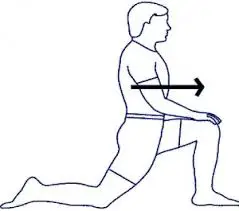
Bridges
- To begin, take a comfortable position and lie down on the bed.
- Your feet should be flat on the bed’s surface as you bend your knees.
- Then, tense your abdominal muscles.
- Raise your torso upward.
- Arms raised above heads are not appropriate.
- Please wait a moment.
- Lower yourself to a lower level.
- Return to your neutral position after that.
- Next, relax.
- This is a five to ten-repetition exercise.
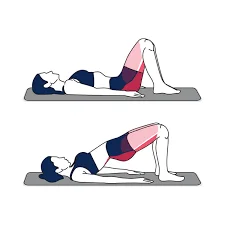
Standing Butt Squeeze
- Maintain a shoulder-width distance between your feet while standing; do not lock your knees.
- Keep your feet facing forward.
- Imagine using your heels to push the floor away from you. (Your gluteal muscles on either side of your hips should contract; your feet won’t actually move.)
- Hold this posture for a brief period of time.
- Return to your neutral position after that.
- Then unwind.
- This is a five to ten-repetition exercise.
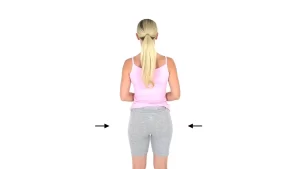
Marching Pelvic Tilt
- Bending at the knees, place your feet flat on the floor beneath your knees as you lay on the ground.
- Firm your lower back against the floor as you release your breath.
- Like you’re marching, slowly raise one leg while bending the knee.
- Reposition your leg slowly back to the ground after holding it up for five to ten seconds.
- Step twice, as if you were marching, with the other leg.
- Throughout the march, make sure to maintain the pelvic tilt posture.
- Return to your neutral position after that.
- Then unwind.
- This is a five to ten-repetition exercise.
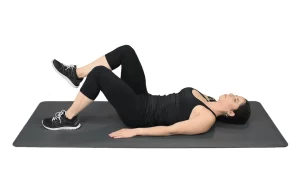
Prevention:
The stability and mobility of your hips and pelvis are greatly enhanced by your hip flexor muscles. Use the following strategies to reduce the risk of injury and enhance hip flexor performance.
Here are some ways to avoid hip flexor tendinopathy;
- Stretches and warm-up before working out
- Exercise regularly as opposed to either occasionally or on the weekends
- Training for a new sport or activity by escalating the duration and intensity of your sessions gradually
- Giving up on any painful activity.
- During exercise, avoid going beyond and beyond your limits.
- In between training sessions, give yourself enough time to recover and avoid overtraining.
- To maintain the health of your joints and tendons, eat a diet high in nutrients and lots of collagen-rich protein.
- Take regular breaks to stretch and walk about to avoid sitting for extended periods.
- Steer clear of vigorous or excessive straining of the hip-supporting structures.
- Identify and address the problems that lead to hip flexor pain by getting a 3D gait and movement analysis.
Risk factors for Hip Tendonitis:
- Age: Your tendons become less flexible and more prone to injury as you get older.
- Particular sports: You run a higher risk of developing hip tendonitis if you engage in sports like gymnastics, running, cycling, ballet dancing, squatting, or lifting.
- Increased training: Hip tendonitis is more likely to occur in people who suddenly increase the duration and intensity of their training.
Prognosis:
In general, there is a good chance that someone with tendinitis will fully recover provided they take enough time off from activities that aggravate the condition to allow the irritated tendon to heal. When surgery is necessary for severe and chronic cases of iliopsoas tendonitis, the prognosis following surgery is typically favorable.
Summary
The fibrous bands that connect muscle to bone are called tendons. Hip tendonitis is a condition that arises from inflammation or irritation of the hip tendon, typically brought on by overuse of the hip muscles. While participating in their sport, many athletes get hip tendinitis. Individuals who have hip tendonitis may feel soreness, some edema, and pain in the vicinity of the injured joint.
Hip flexor tendinopathy, which encompasses tendinitis and tendinosis, can result from overuse from sports like soccer, gymnastics, or running, or from an acute injury such as a fall or auto accident. Furthermore, when tendons age and lose their natural suppleness, hip flexor tendinopathy may develop.
More severe cases of hip flexor tendinopathy might need more significant treatment, although milder cases might get better with rest and conservative care. Reducing pain and inflammation, accelerating healing, and averting more injuries are the three core goals of treatment. This may entail a mix of physical therapy, exercise, and additional supporting interventions.
With a good chance of complete recovery, hip tendonitis is treated with rest, ice, NSAIDs, stretching, and physical therapy. In cases of chronic hip tendonitis that do not respond to treatment, an iliopsoas tendon release surgery may be necessary to relieve tightness and pain, or a cortisone injection may be necessary to reduce inflammation.
It can result in chronic pain and make it difficult to carry out daily tasks if left untreated.
FAQ
Tendons are long fibers of soft tissue that connect muscle to bone. Tendonitis is an inflammation of these cords. The term “hip flexor tendonitis” refers to inflammation of the rectus and/or iliopsoas tendon sheaths.
Hip soreness is the first symptom of hip tendinitis. After an extended period of sitting, the patient has stiffness that eventually turns into pain (without treatment). The most noticeable hip pain occurs when moving the hips, particularly when flexion is involved. Hip pain can be felt in a variety of hip locations, depending on the tendons involved; however, the most typical location is outside the hip. Additionally, some people have low back pain.
Hip tendinitis can be easily treated by resting the afflicted joint and applying ice. Pain can be reduced by taking medication. Steroid injections are necessary for severe pain patients. physical therapy and dry needling are non-surgical treatments for tendonitis. Prevent arthroscopic surgery for the most serious patients.
Yes, with plenty of rest and cautious measures, modest swelling of the hip tendons can resolve. It’s a drawn-out process since tendon healing takes time. While strained tendons require surgery, inflamed tendons can recover on their own.
Hip flexion is challenging when there is hip flexor tendinitis. It can be difficult for those with iliopsoas tendinopathy to run or walk. Therefore, if hip tendonitis is identified, rest and avoid walking are recommended.
Hip tendinitis’ primary underlying cause is misuse of the muscles. Hip tendonitis can be made worse by overdoing physical activity (cycling, jogging, etc.) following a diagnosis of tendinitis.
To properly recover from minor illnesses, one to three weeks of rest and treatment are usually necessary. Conversely, more serious instances may require up to six weeks or more. Furthermore, wounds that are not treated right away may require months to heal completely and may result in persistent discomfort.
A common description of gluteal tendinopathy is a persistent soreness or bruising on the side of the hip, which worsens in the morning. A physiotherapy assessment can yield a diagnosis, which an MRI or ultrasound scan can verify.
Hip flexor hypertonicity can be detected with the use of the Thomas or Modified Thomas tests. “Iliopsoas test”: conducted with the patient in a supine position, the test involved resisting hip flexion with the hip in external rotation. A positive test result is indicated by any signs of weakness or pain.
Your hip may experience discomfort, tenderness, and even swelling if you have severe tendinitis. If you don’t treat the pain, the microscopic tears will enlarge and your tissue will become more stressed. If treatment is not received, range of motion loss may begin as the tissue continues to fail.
Degenerative tendinopathy
Reactive tendinopathy
Tendon disrepair (failed healing)
The majority of tendinopathy patients resolve fully on their own without the assistance of a doctor. Rarely, though, severe tendinopathy left untreated can result in tendon rupture.
Unexpected injuries might result in tendinitis. The same movement repeated over time is a far more likely cause, though. The majority of people get tendinitis as a result of repetitive actions from their work or hobbies. Tendons are stressed by this.
Steer clear of workouts that require you to repeatedly flex your hips or raise your leg up to your chest. Until your doctor gives you a diagnosis, keep your squats shallow and refrain from doing lunges. Avoid working through discomfort. Be mindful of your pain as you run or walk.
A regular pillow placed between your knees can help relieve hip pain. By aligning the pelvis and supporting the hips, this lessens the load on the hip joints. Elevated Upper Body, It can be beneficial to use an angled pillow to raise your upper body and relieve pressure on your hips.
Yoga has the potential to promote flexibility, reduce muscle tension, and be incredibly calming. Furthermore, some hip discomfort may be eased with proper yoga positions, particularly if the hip joint is uncomfortable or tight. Stretching and strengthening the muscles that support hurting joints is another benefit of yoga.
Corrective exercises that strengthen the gluteals will release compression from the hip and improve hip posture when exercising. It has been shown that gluteal strengthening exercises are very effective in the long run at easing discomfort and enhancing function.
Exercise for hip tendonitis will assist build stronger muscles, which can enhance your range of motion and provide your hip joint with greater support.
Many people are unsure whether bursitis or tendonitis is to blame for their hip pain. Numerous of the same exercises are used for both conditions and hip exercises can be an effective treatment for both.
References:
- Orthopedics Sports Medicine | Hip Flexor Tendinopathy. (n.d.). Hip flexor tendinopathy is one of the conditions listed by Intermountain Healthcare at https://intermountainhealthcare.org/medical-specialties/orthopedics-sports-medicine/
- McCormack, J. December 7, 2023. Exercises for Hip Flexor Tendinopathy and Tendonitis. Perfect. Hip flexor tendonitis is also known as runners’ and dancers’ tendonitis, according to https://flawlessphysio.co.uk/hip-flexor-tendonitis/#:~:text=Hip%20Flexor%20Tendonitis. Reference within the text: McCormack (2023)
- Redstone, S. (March 25, 2020). What is Hip Flexor Tendinopathy? – Central Physio & Pilates. Central Physio & Pilates. Physiotherapy Central (UK): What is Hip Flexor Tendinopathy? Reference within the text: Redstone, 2020
- Complete Citation: D. June 2, 2023. Regaining and Healing Hip Flexor Tendinopathy. NYDNRehab.net. Hip flexor tendinopathy: a healing and rehabilitation process In-text Reference: (2023)
- Medical Wave. Hip Tendonitis Treatment & Symptoms (Hip Flexor Tendinitis) (n.d.). https://medicalwaveus.com/hip-flexor-tendinitis-treatment-symptoms/ In-text Citation: Medical Wave, n.d. (Treatment & Symptoms of Hip Flexor Tendinitis)
- T. Garabekyan (2018) 9 October. What is tendonitis in the hip flexors? Century City Orthopedic Physician. Southern California Hip Institute. What is hip flexor tendonitis? https://www.socalhip.com/ Reference inside text: (Garabekyan, 2018)
- Aug. 2, 2022: Dpt, K. G. P. An overview of hip tendinitis and additional information. Hip tendinitis (5224464) at Verywell Health. https://www.verywellhealth.com Reference inside text: (Dpt, 2022)
- Complete Citation: Hip Tendonitis: Reasons & Optimal Therapies for 2024. (2023, December 16). ProHealth Clinic for Prolotherapy. Hip tendinitis: https://prohealthclinic.co.uk/blog/ The best treatment options for hip tendonitis in 2024 and 2023 are listed in the in-text citation.
- Causes of Hip Tendonitis and the Best Treatments for It in 2024. December 16, 2023. ProHealth Clinic for Prolotherapy. Hip tendinitis: https://prohealthclinic.co.uk/blog/ The best treatment options for hip tendonitis in 2024 and 2023 are listed in the in-text citation.
- Image 3, R. M. P. (January 21, 2021). YouTube: Butt Clench Exercise. s6ZpmqjNlCk can be seen on YouTube. In-text Reference: (2021)
- Image 4, Sworkit [n.d.]. Pelvic tilt with March – Sworkit. https://app.sworkit.com/exercise-library Reference within the text: Sworkit, n.d.

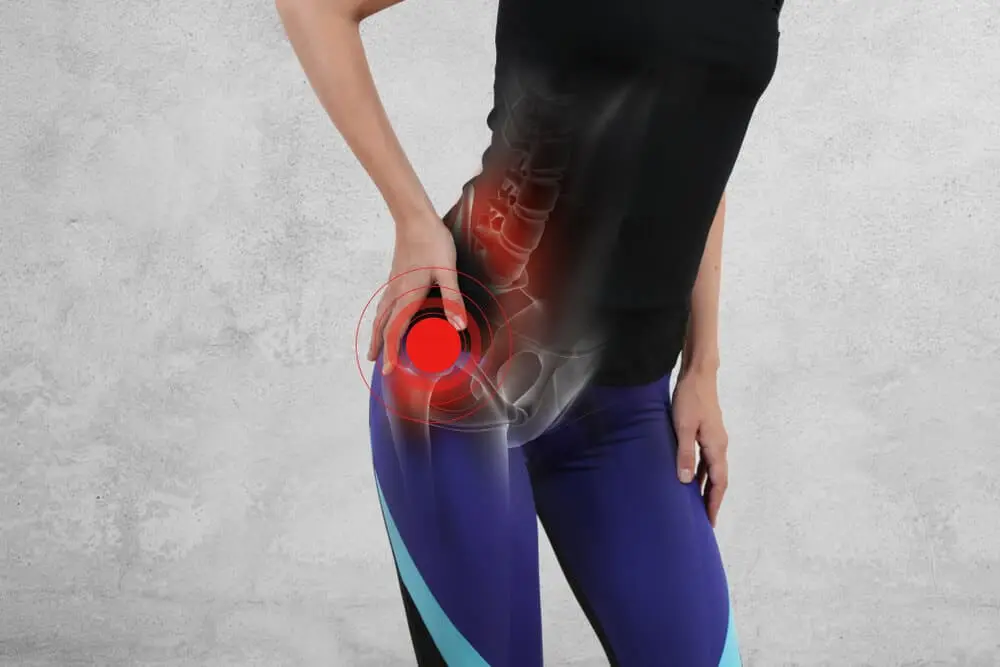
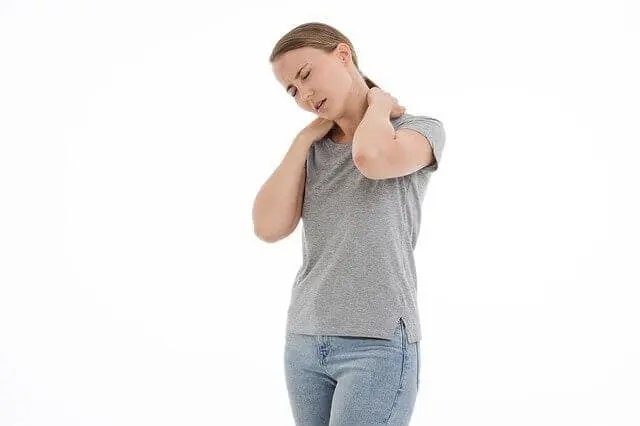
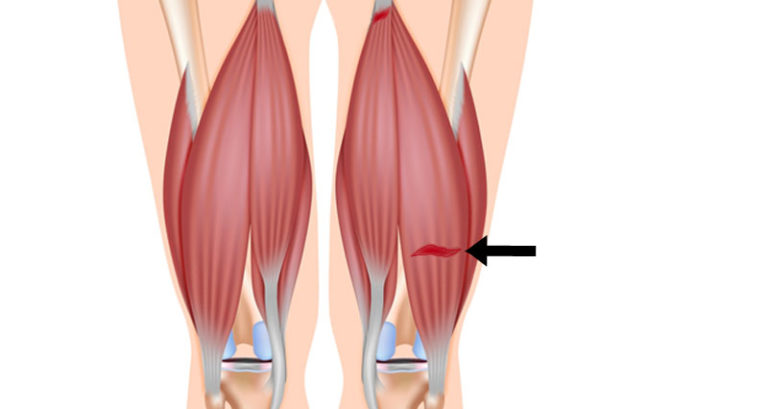


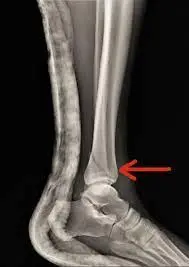
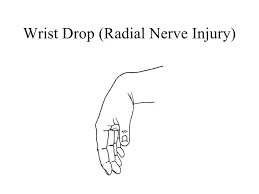
2 Comments